Bugging Out! For Insect Week

Insect Week 2024 is here, and we’re celebrating all things insect with our pal, Dr. Isaí Madriz.
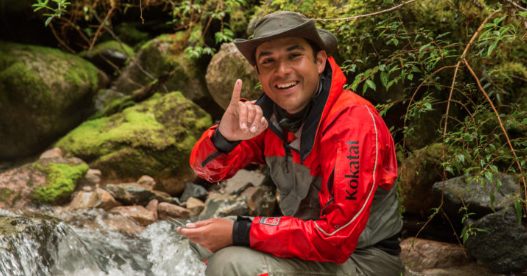
Dr. Madriz
Dr. Madriz, an entomologist, zoologist, National Geographic Explorer, and Fulbright Fellow, has devoted his career to exploring insect diversity through images and stories of exploration, science, and human connections.
During his expeditions, Isaí relies on Iridium to keep him connected with colleagues, friends, family, and help should it be needed—utilizing the Iridium GO!®, Iridium GO! exec®, and Iridium Extreme®.
What better way to celebrate Insect Week than with all the creepy, crawly (and sometimes cute!) creatures that play a critical role in our ecosystem. Isaí’s work is a testament to how little things make a big difference in the world around us.
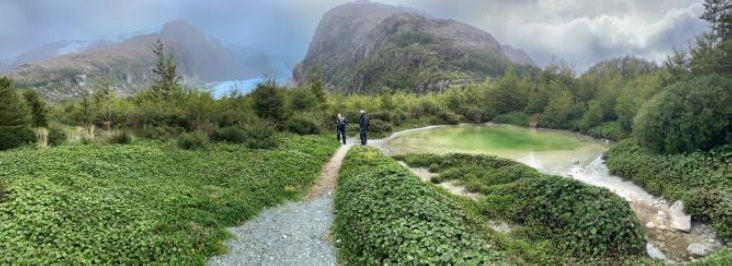
Dr. Madriz explores the remote Bernard glacier at the southern end of the southern Patagonia Ice Field.
Learn more about some of the insects Isaí has found on his #IridiumConnected adventures:
Caterpillar & Wasps
The pale-colored oblong structures on top of this caterpillar are cocoons of minute parasitoid wasps. Once the adult wasp emerges, it flies away to repeat the cycle. The caterpillar continues its life in the Patagonian steppe, unaware that it will never reach adulthood.

Owl Butterfly
Resting on a Heliconia plant in Costa Rica are an owl butterfly (top left) and a blue morpho (bottom right). The owl butterfly exhibits the impressive ventral coloration of its wings, its forewing reveals a pattern mimicking a snake head and its hindwing coloration resembles an owl’s eye. On the other side of the plant, the blue morpho displays the blue iridescence of the dorsal side of its wings.

Moth Flies
For most of their lives, these moth flies feed on decaying wood inside southern beech tree trunks. The larva (center) searches for a safe place to begin its metamorphosis. The developing adult will break open the larval skin and turn into a pale-yellow pupa (left). The horn-like protrusions on its head are the respiratory structures which must remain unobstructed during the metamorphosis process to ensure survival. As it nears the final moments of transformation within the pupal skin, the adult develops its final coloration (right) to complete its life cycle.

Click Beetle
The largest click beetle in Patagonia is feeding on a golf ball-sized fungus that parasitizes southern beech trees.

Midge
In the splash zone of a remote waterfall in Patagonia, a solitary midge emerges from its pupal skin next to a leafy liverwort. This individual will continue the evolutionary cycle that has made this group successful colonizers of this unique microhabitat.
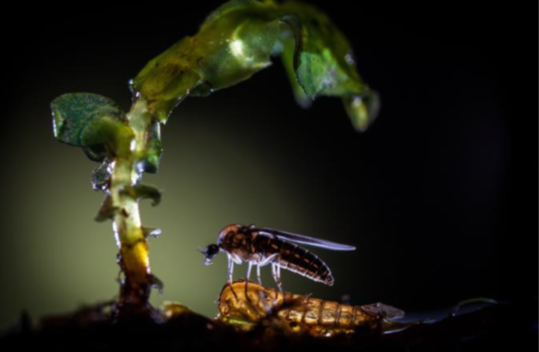
Diving Beetle Larva
In the clear and gelid waterways of Chilean Patagonia, a predaceous diving beetle larva remains motionless while waiting for its prey to swim by.
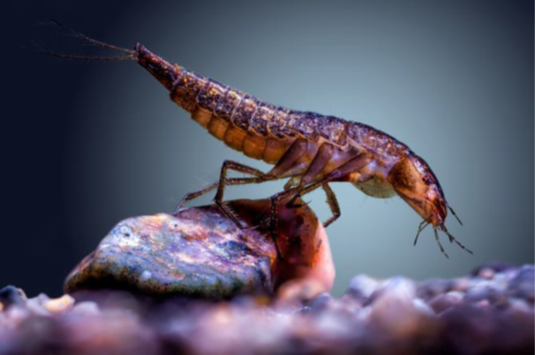
Weevil
Under the dense canopy cover of the temperate rainforest of Patagonia, this weevil feeds on the nutritious juices that flow under the exposed bark of a southern beech tree branch.
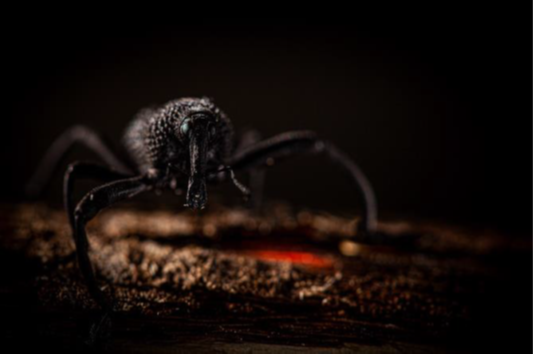
Follow Dr. Madriz on Social Media:
Instagram: @IsaiMadriz | Facebook: Isaí Madriz | X: @IsaiMadriz




